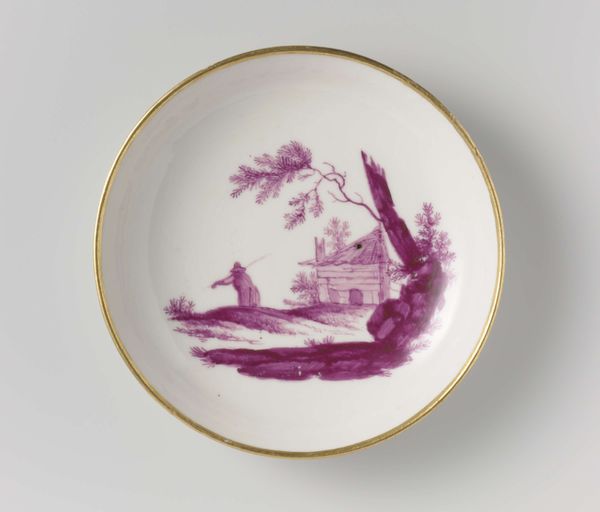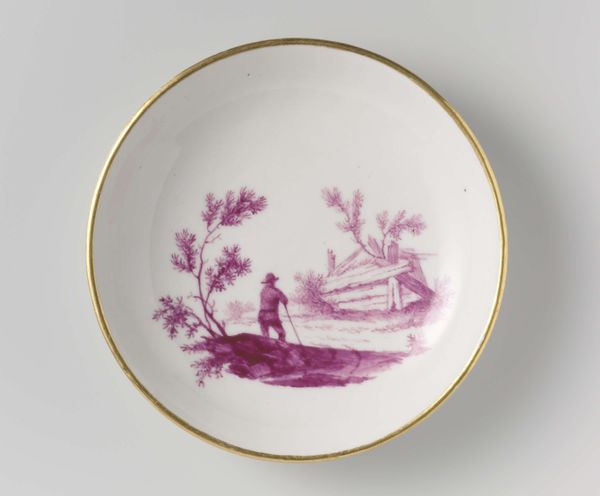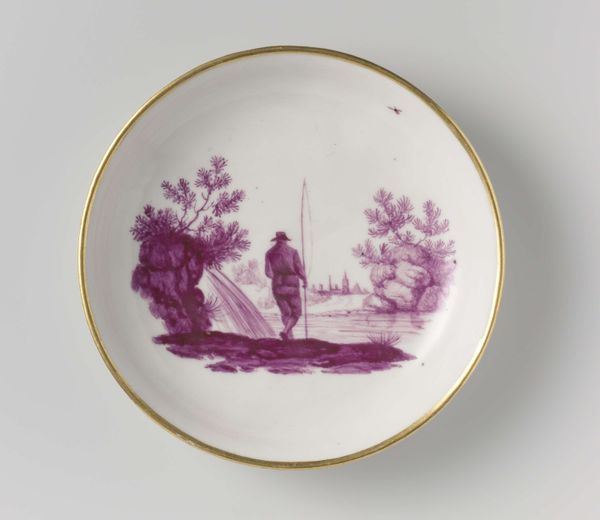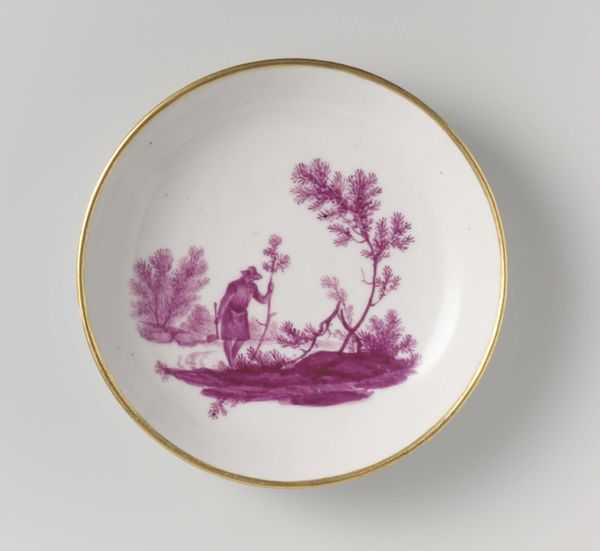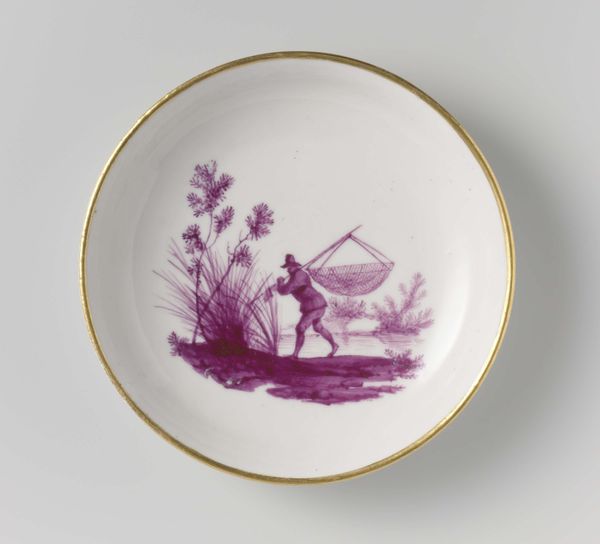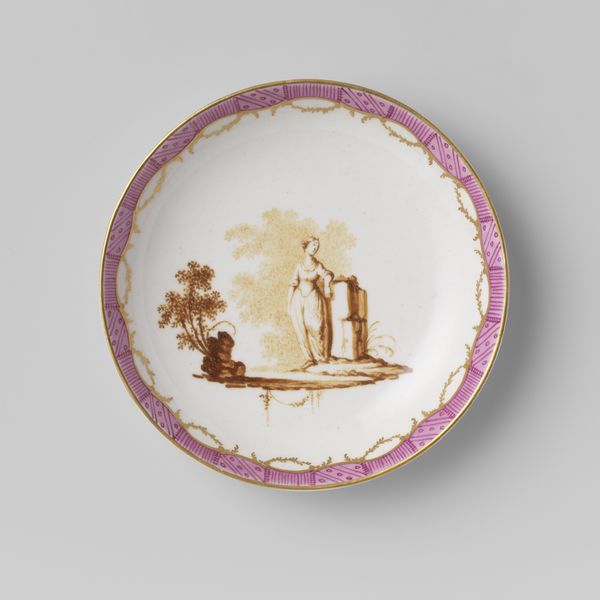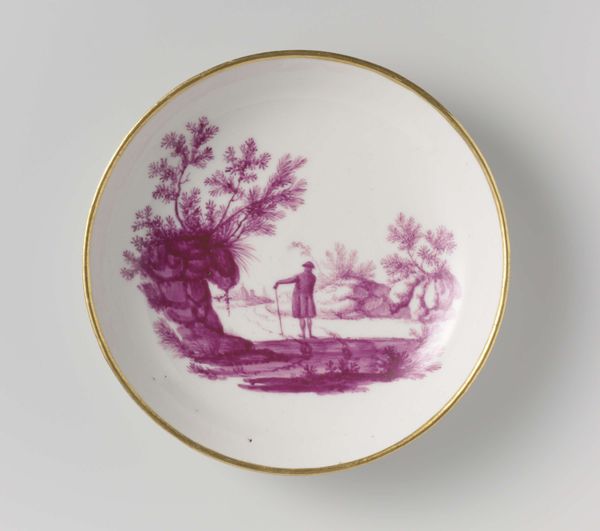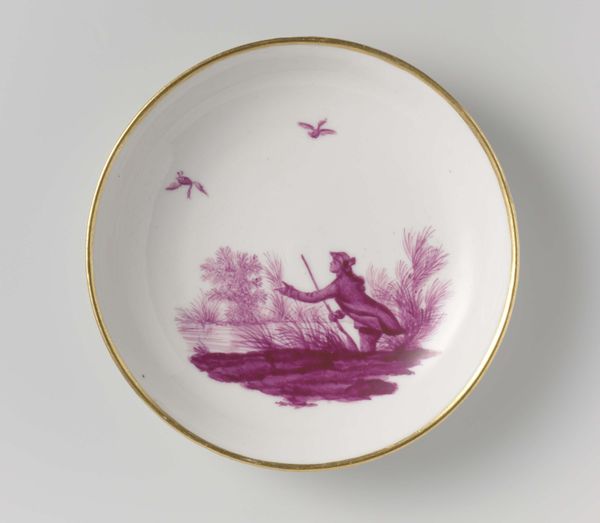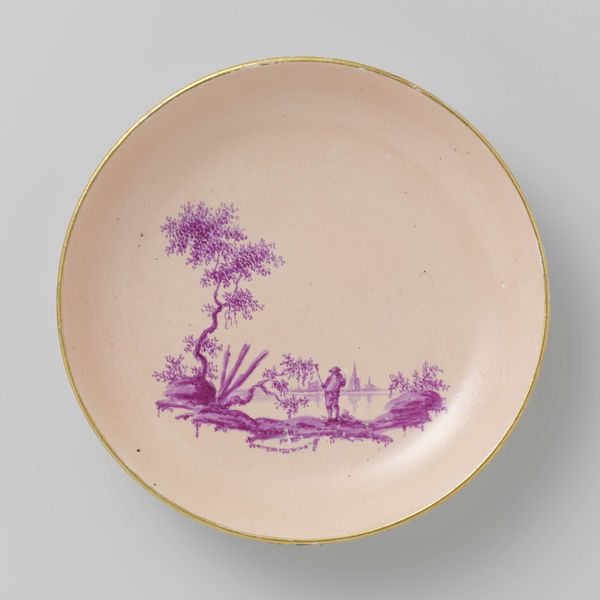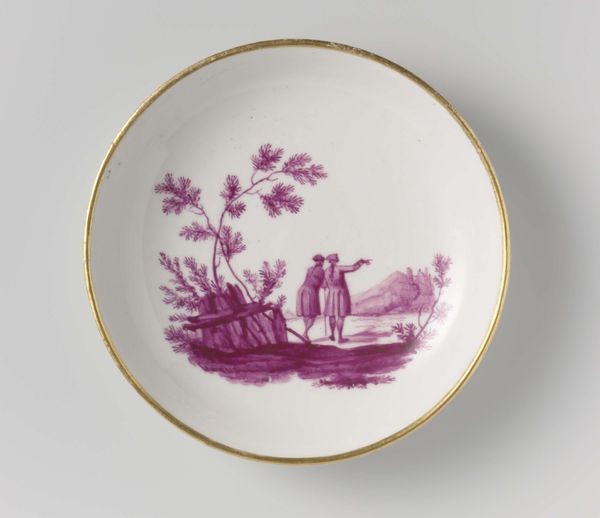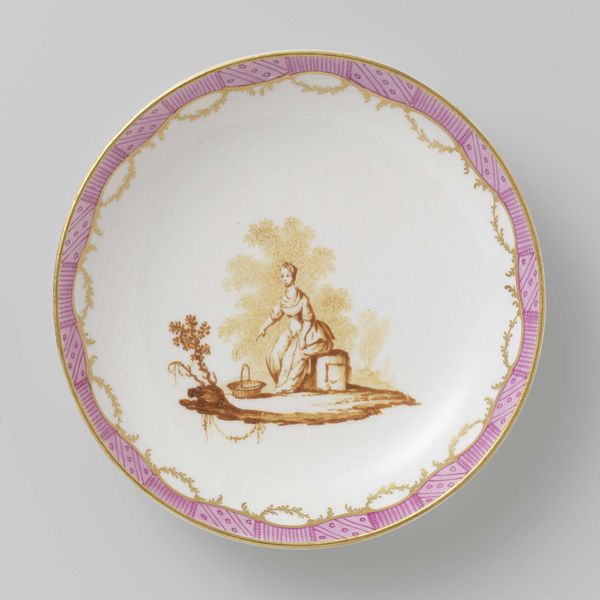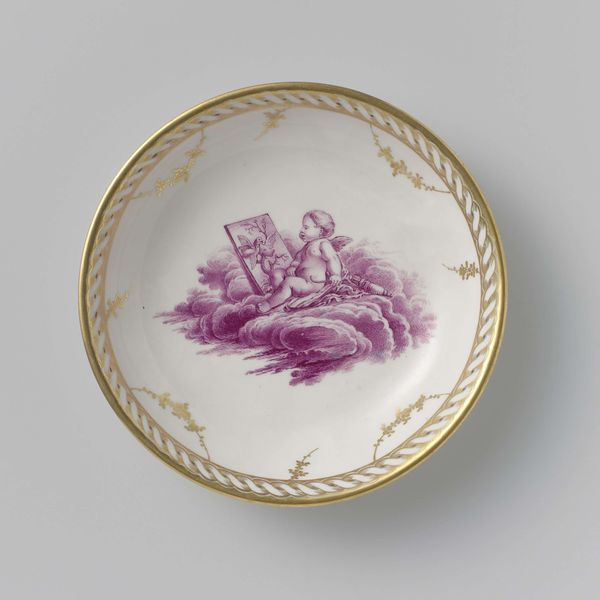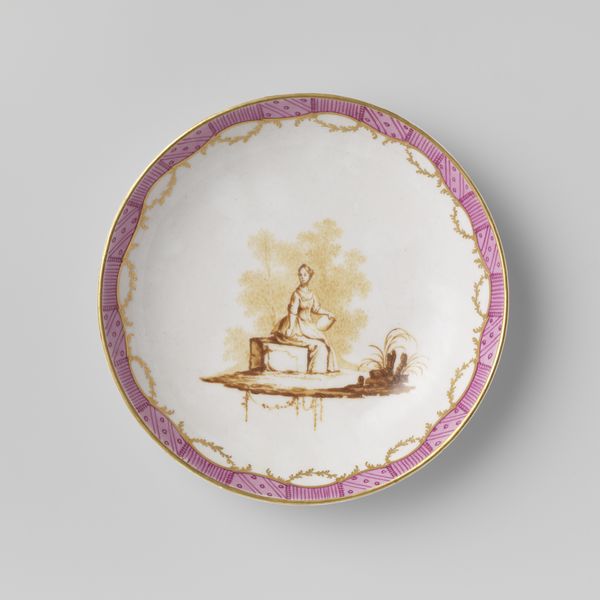
drawing, tempera, print, ceramic, earthenware
#
drawing
#
tempera
# print
#
landscape
#
ceramic
#
earthenware
#
stoneware
#
folk-art
#
ceramic
#
genre-painting
Dimensions: height 2.2 cm, diameter 12.0 cm
Copyright: Rijks Museum: Open Domain
Editor: Here we have a 'Schotel,' a plate crafted around 1775 by the Loosdrecht manufactory. It's made of earthenware, decorated with drawing, tempera and prints, the scene rendered in shades of purple and framed by a thin gold rim. It depicts a woman drawing water from a well. It's striking how utilitarian objects can be elevated with such scenes, but also... limited. What do you see in this piece? Curator: Well, let’s start with the materiality. This isn't some grand oil painting. It's earthenware, a common material, decorated with a printed image. The industrial printing allows images, which may or may not have an original design, to be made faster and repeated more easily than by hand painting, giving a sense of folk art. How do these more humble origins challenge our typical notions of "art"? Editor: That's a great point. It democratizes art by bringing decoration to everyday objects. So, the act of making, of applying this image to a simple earthenware plate, elevates the plate beyond its basic function. Curator: Exactly! The plate then becomes a vehicle to reflect a larger system, as we need to see not only what is depicted in art, but how its very production integrates cultural and economic systems. Look at the landscape scene chosen – how does it allude to daily life and labor? And is it simply a depiction, or does it serve a deeper cultural purpose, accessible through the object itself? Editor: So, we can think of this plate as less an individual artistic achievement and more a result of broader social and manufacturing processes. Thanks for making me think about more than just aesthetics! Curator: Indeed. Hopefully this offers us new ways of assessing art within production methods.
Comments
No comments
Be the first to comment and join the conversation on the ultimate creative platform.
